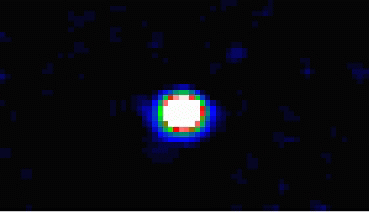
By making a Bose-Einstein condensate in a particular isotope—rubidium-85—and then changing the magnetic field in which the BEC is sitting, researchers can adjust the wavefunction's self-interaction between repulsion and attraction. If the self-interaction is repulsive, all the parts of the wavefunction push each other away. If it is attractive, they all pull towards each other, like gravity. Achieving a pure BEC in rubidium-85 required the cloud of atoms to be cooled to about 3 billionths of a degree above absolute zero, the lowest temperature ever achieved.
Making the self-interaction mildly repulsive causes the condensate to swell up in a controlled manner, as predicted by theory. However, when the magnetic field is adjusted to make the interaction attractive, dramatic and very unexpected effects are observed.
The condensate first shrinks as expected, but rather than gradually clumping together in a mass, there is instead a sudden explosion of atoms outward. This "explosion," which actually corresponds to a tiny amount of energy by normal standards, continues for a few thousandths of a second. Left behind is a small cold remnant condensate surrounded by the expanding gas of the explosion. About half the original atoms in the condensate seem to have vanished in that they are not seen in either the remnant or the expanding gas cloud.
Since the phenomenon looks very much like a tiny supernova, or exploding star, the JILA team dubbed it a "Bosenova." The most surprising thing about the Bosenova is that the fundamental physical process behind the explosion is still a mystery.
Return to "From Supernova to Smoke Ring: Recent Experiments Underscore Weirdness of the Bose-Einstein Condensate" News Release.

